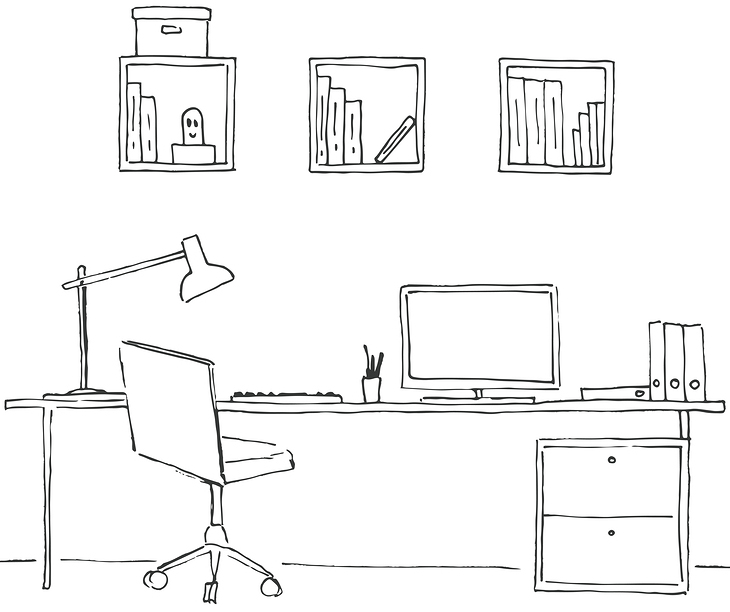A little extreme? Maybe
Too many hours travelling to and from your place of work will  eventually take its toll on you, your family and your work life!
eventually take its toll on you, your family and your work life!
It’s hardly groundbreaking news.
Watch the way people drive on the motorways and on the train commute to London and you can see how tired and fed up most people seem to be.
The economic climate has resulted in many of us commuting even farther to work due to changes in employment or seeking better opportunities.
For twenty years I regularly commuted to my place of work often fifty-sixty miles each way, on the road for four hours plus assuming there was no motorway chaos or accidents!
In my job as a sales representative, I managed to accumulate 49,000 business miles that’s a little under 1,000 miles a week in one year.
That paled into insignificance to other work colleagues some of whom were travelling in excess of 60,000+ a year.
There was a competition to see who could accumulate the most number of business miles because our fuel cards were running an incentive, swapping road-miles for air miles.
At the time I was newly divorced and so there was no direct impact on anyone but me.
No wonder I was tired, cranky and single I didn’t have time for relationships let a lone time to socialise.
My backside started to turn square sitting in the car for so long. Often my only relaxation time was my daily run, either very early or late at night.
Not surprising then that I was and still am a big advocate of working from home, or teleworking.
Three vital tools a salesperson needed in those days was a phone, a writing pad and a desk or table.
I simply could not understand why my employers were reluctant to let us work from home.
I worked so hard to prove and convince my sales bosses that this surely was a more cost effective and productive way of working, I even did a presentation to justify the cost benefits.
In the early 90’s my idea of working from home was 1-2 days a week, with a day at the office and 1-2 days out visiting customers and prospective clients.
It appeared to be a workable solution and it had the potential to deliver a more productive and less tired sales consultant.
Sadly, my employers were resistant! Surely proof of staying at home was PRODUCTIVITY = RESULTS = SALES = SAVINGS = no more excessive fuel and mobile phone bills.
Many years later when I established Digital Print Management, my commute to the office is typically a fifteen mile trip and fits in with my boys schooling, my home and personal life, all of which are reasonably well balanced.
Many of our customers have adopted a more laid back approach to their employees working from home and oftentimes I talk with customers who themselves are also working from home.
Employers are slowly waking up to the benefits of mobile working but, it is a slow change marked with cultural antipathy.
Attitudes are shifting and it is becoming the accepted norm. Wherever it is physically possible, a job should allow flexibility and freedom to work from the home and office.
Mobile devices, smartphones and tablets provide the flexibility and accessibility to achieve this.
One company I worked for in the city absolutely insisted that I checked in to the office daily prior to going out cold calling and visiting clients, in spite of the travelling I did into London daily.
It felt like a sprint to get to the office on time before then dashing out again to my first call.
No matter how hard I tried I could not convince the manager that working this way was tiring and ineffective.
Evidently me showing my face at the beginning of the day was the reassurance he needed to know that yes, I was really working.
It didn’t occur to him that if I wanted to I could have slipped off any afternoon to Oxford Street to go shopping.
Work should be viewed as an activity and not a destination or location that one has to trawl through traffic to get too.
In the last five years there has been a radical shift in attitudes to the home working model between January-March 2014 there were 4.2 million of us working from home or 13.9{1d74e91790c4d065853aa1e61f19fbe549b48cdbdef5356588c1984bdc5a1a2f} of the workforce, 25.9 million who were non-home workers.
7{1d74e91790c4d065853aa1e61f19fbe549b48cdbdef5356588c1984bdc5a1a2f} of non-home workers were self employed compared with 63{1d74e91790c4d065853aa1e61f19fbe549b48cdbdef5356588c1984bdc5a1a2f} of home workers. 34{1d74e91790c4d065853aa1e61f19fbe549b48cdbdef5356588c1984bdc5a1a2f} of home workers were employees of an organisation. (Source: ONS)
Accessing emails, connecting to company data on the go have revolutionised the way we work, engaging with customers remotely, on social media, email, skype or google hangouts is an accepted standard of working.
With technology making our lives easier and stress free from the daily commute surprisingly large companies like Yahoo back in 2013 turned the teleworking policy on its heels and insisted that employees should work at the office location because it stimulates ideas, decisions and insights often in the hallway or in the cafeteria.
Organisations have streamlined integration of business applications into the mobile world through cloud computing providing a greater level of functionality and security in mobile platforms for remote working.
Working from home has made portable devices indispensable.
Does working from home have it’s downside?
Aside of the commute, working from home can leave us disconnected from work colleagues and in some instances it could be days before you talk to someone face to face.
But working from home affords you the opportunity to think, something you can’t do effectively in a busy office, time to plan, to be creative and the most important part is it gives us the chance to collect the children from school or be there to welcome them home!



